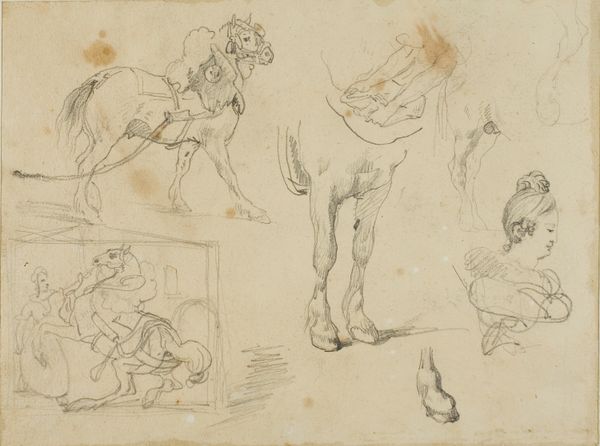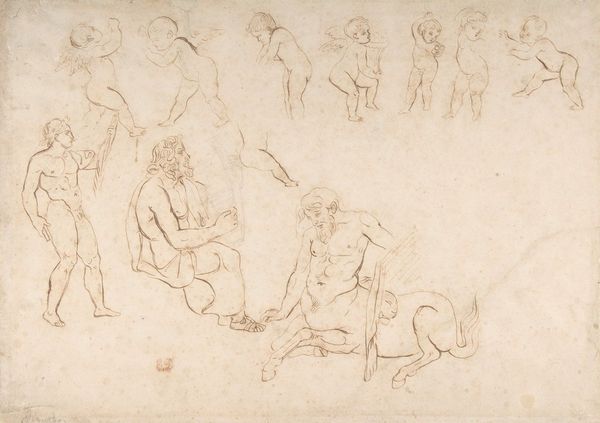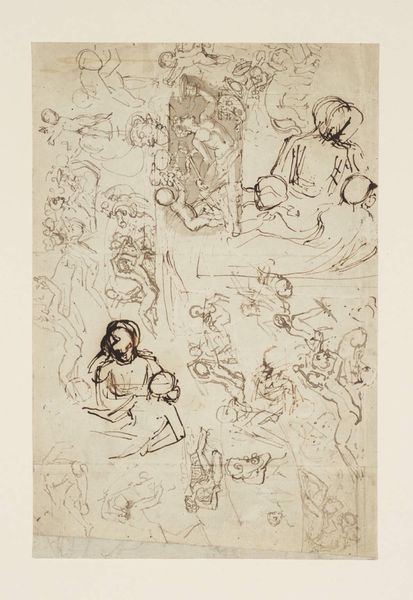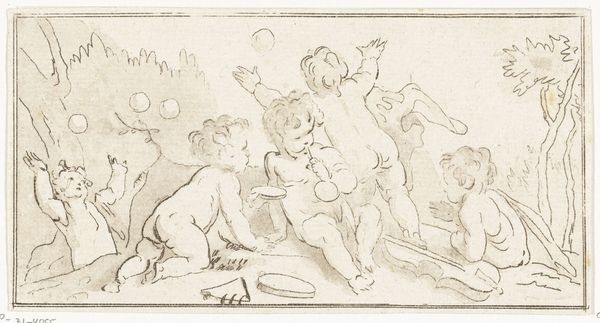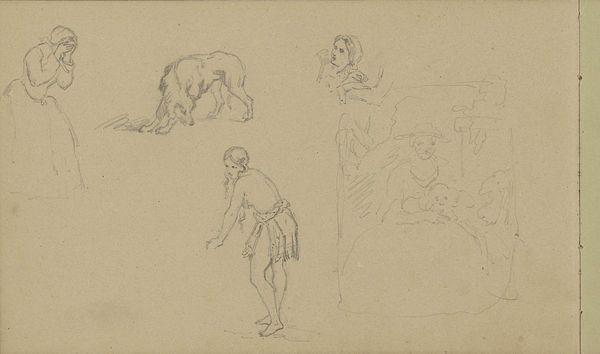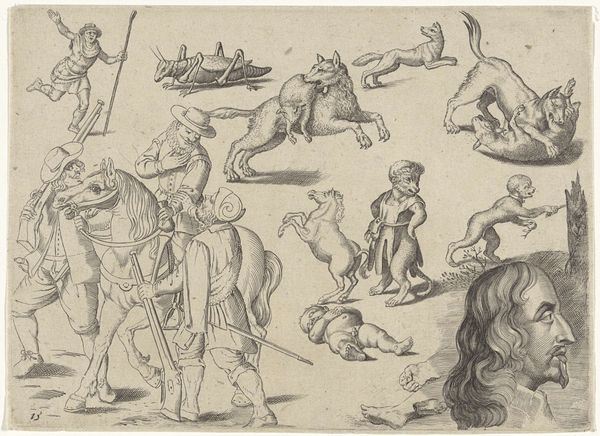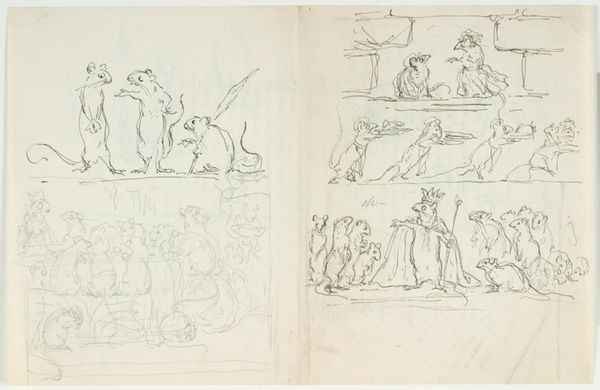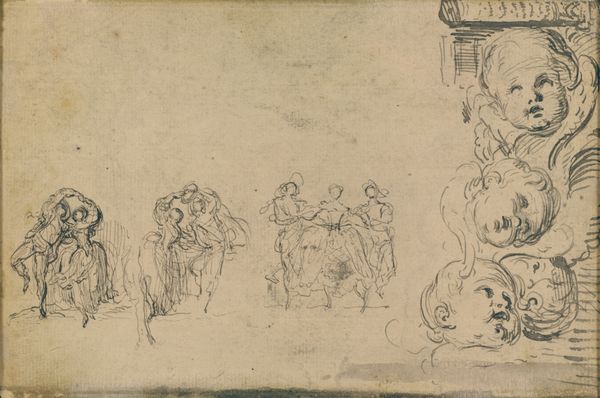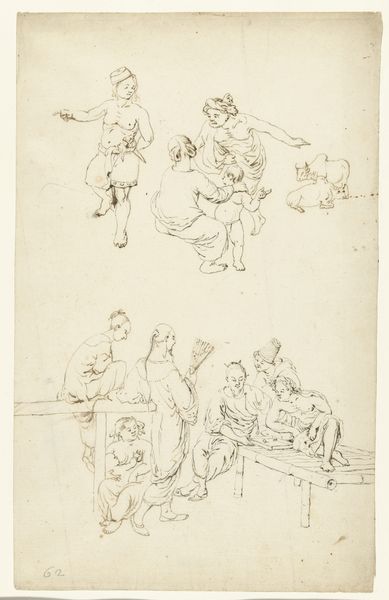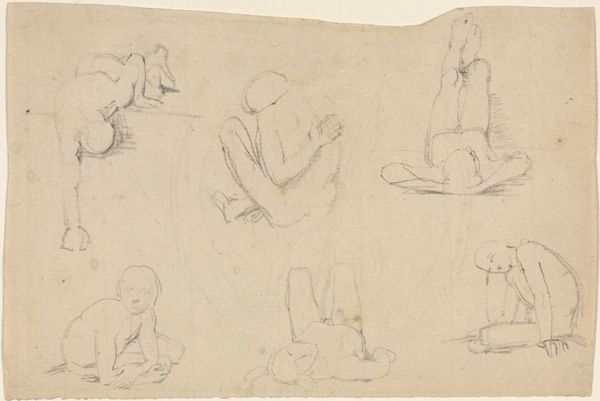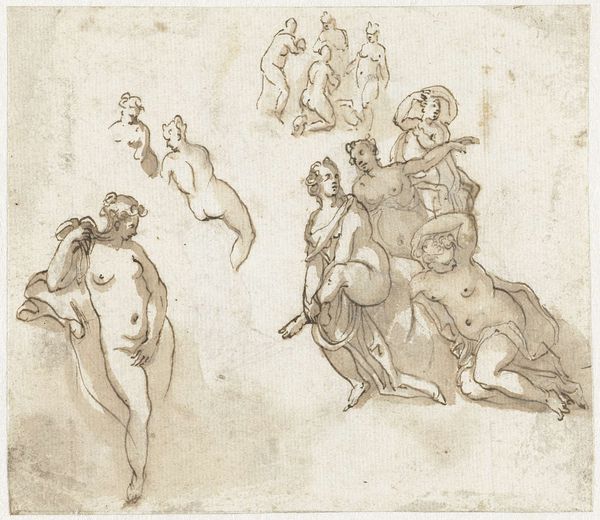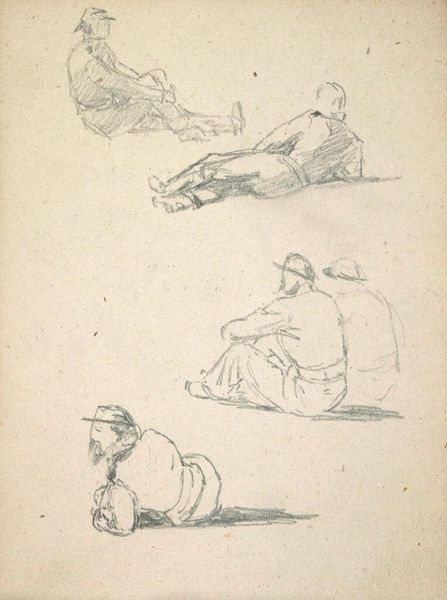
Six Figure Studies, including four for The Poor Italian Family c. early 19th century
0:00
0:00
drawing, ink, graphite
#
portrait
#
drawing
#
narrative-art
#
figuration
#
ink
#
romanticism
#
graphite
#
history-painting
#
academic-art
#
nude
Copyright: Public Domain: Artvee
Curator: What a compelling drawing! The raw energy in these sketches is palpable. Editor: Yes, there's an immediacy. It almost feels like we're looking over the artist's shoulder as the ideas are forming. I find it moving that someone sought to immortalize what appears to be a scene of impoverished people. Curator: Indeed. The work you are admiring is entitled "Six Figure Studies, including four for The Poor Italian Family", created by Théodore Géricault in the early 19th century. We can see a medley of figures here, rendered primarily in graphite and ink. Géricault’s use of these materials showcases a process driven exploration. Editor: It is also significant in relation to Géricault's artistic and social environment. This connects directly to the Romanticism and the then burgeoning trend toward Realism—painting ordinary subjects with an emotive approach. It certainly challenges the prevailing Neoclassical history paintings idealized version of antiquity, in my view. Curator: Precisely. If we look closely at the individual figures, it becomes clear that Géricault meticulously explored anatomy and movement. The raw materiality of the paper allows us to observe the gestural, almost hurried manner in which the sketches are executed. These rapid lines were less about a polished finished product and more a study into form. The visible layering is also compelling and reveals the artist's working process. Editor: I agree completely. And beyond pure physicality, look at these depictions of poverty. This brings the suffering of everyday people to the fore—these choices undoubtedly contribute to the changing role of the artist as a social observer, questioning artistic institutions to affect social change. Géricault's social and political consciousness cannot be dismissed here. Curator: A wonderfully articulated view, which leads me to appreciate Géricault's ability to not only record the human form, but to reveal so much of the artmaking itself, making process just as potent as subject. Editor: Well, it strikes me now, observing that dichotomy between form and subject is, was, and maybe still is a crucial site where visual culture can shape socio-political awareness.
Comments
No comments
Be the first to comment and join the conversation on the ultimate creative platform.
